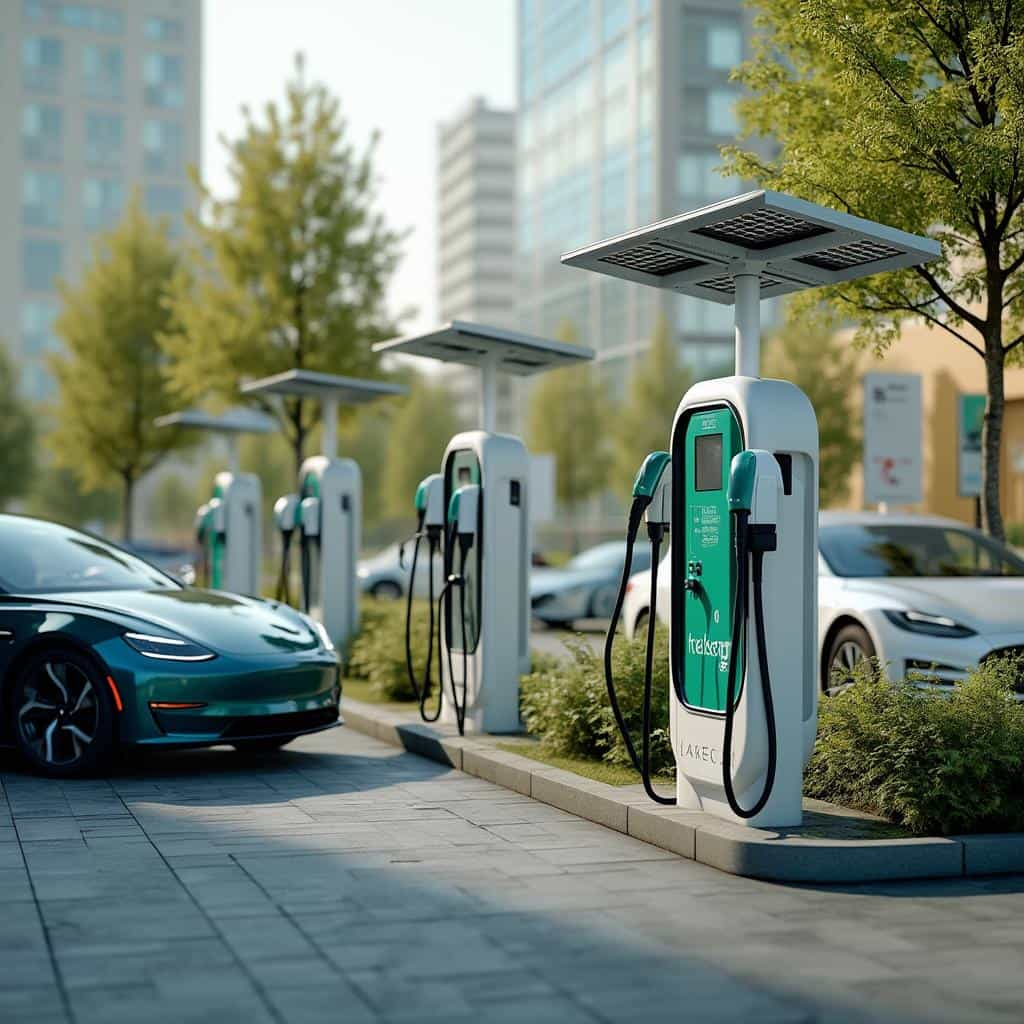The transition from fossil fuels to renewable energy sources is pivotal in addressing global climate challenges. Central to this shift is the adoption of electric vehicles (EVs) and the necessary infrastructure to support them, primarily through charging stations. As more countries commit to net-zero emissions, green energy and charging stations are no longer futuristic concepts but rather immediate necessities.
In recent years, several proposals have emerged focusing on enhancing the charging infrastructure to meet burgeoning demand. Companies worldwide are investing heavily in developing charging stations that cater to urban and rural areas, making EVs a viable option for all. Notably, Tesla, ChargePoint, and Siemens are leading the charge with innovative technologies and widespread network deployment.
The cost of installing a charging station can vary significantly depending on the type and location. Typically, there are three levels of charging stations: Level 1, Level 2, and DC Fast Chargers. Level 1 chargers are the slowest and cheapest, often used in residential settings. Level 2 chargers, common in commercial areas, offer faster charging and are moderately priced. DC Fast Chargers, although the most expensive, provide the quickest charge time and are crucial along highways and busy urban zones.
Installing a Level 1 charger might cost between $300 to $600, including basic equipment and installation fees. In contrast, Level 2 chargers can range from $1,000 to $3,000. DC Fast Chargers, given their advanced technology, involve a heftier price tag ranging from $10,000 to $40,000. However, government subsidies and incentives often reduce these costs significantly, encouraging wider adoption.
In the United States, states like California and New York offer substantial rebates and tax credits for both businesses and individuals installing charging stations. In some cases, these benefits can cover more than 50% of the installation costs. Meanwhile, in Europe, countries such as Norway and the Netherlands lead the front in charging infrastructure, boasting dense networks of fast chargers, often subsidized by governmental efforts to minimize costs.
Another critical factor in choosing a charging station provider is the network’s reach and compatibility with various EV models. Tesla’s proprietary Supercharger network, for example, provides a seamless experience for Tesla owners but may not cater to other brands without adaptors. On the other hand, ChargePoint boasts a network accessible to almost all EV models, making it a versatile option for mixed EV household or business fleets.
The efficiencies and conveniences afforded by DC Fast Chargers exemplify the ongoing innovations in green energy technology. Beyond speed, some newer models are equipped with solar panels and battery storage options, further reducing the reliance on non-renewable power sources. According to Dr. Jane Hendricks, a leading scientist in renewable energy, ‘The integration of solar energy into charging stations represents a formidable shift towards complete sustainability in energy consumption.’
However, even with advanced charging stations, certain challenges remain. The inconsistency of available charging points in rural areas is a notable concern. While urban residents have abundant options, those in less populated areas face limited availability, which may deter widespread EV adoption. To address these discrepancies, some proposals include ‘charging hubs’ in rural regions, supported by mobile app services that ensure real-time availability and reservation facilities.
Public perception and legacy beliefs also pose hurdles. Many people still harbor misconceptions about the efficiency of electric vehicles and charging networks. Yet, as more consumers share positive experiences and cost savings associated with EVs, these myths are gradually dissipating. Indeed, studies have shown that the total cost of ownership of electric vehicles is often lower than traditional vehicles when factoring in fuel savings and maintenance.
In conclusion, green energy’s integration into the automotive sector, via robust charging station networks, is indispensable for sustainable transportation solutions. Potential EV owners must weigh various factors such as initial installation costs, government incentives, network coverage, and charging speeds when choosing a provider. A comprehensive understanding of these elements enables consumers to make informed choices, ultimately promoting greener and more efficient energy use.
You may also like
Green Energy and Charging Stations: Proposals and Costs
As the world shifts towards greener energy sources, the demand for electric vehicle (EV) charging stations is on the rise. This article examines the current landscape of EV charging infrastructure, comparing proposals, costs, and benefits. We delve into geographic cost variations and spotlight the most competitive charging station offers.
Analysis of Green Energy Through Photovoltaic Panels
As the world searches for sustainable solutions to combat climate change, solar energy emerges as a frontrunner. This article explores the various proposals, costs, and advantages associated with photovoltaic panels, providing a comprehensive guide to understanding and investing in solar power. It also delves into geographical cost variations and compares current market offerings for optimal decision-making.
Photovoltaic Solar Panels: Focusing on the benefits
As renewable energy becomes an integral part of our lives, photovoltaic solar panels are at the forefront of this transformation. This article delves into the green energy revolution, focusing on the benefits, costs, and available options for solar panels. We will compare various proposals to help consumers make informed decisions, analyzing the most cost-effective solutions available across different geographical areas.
